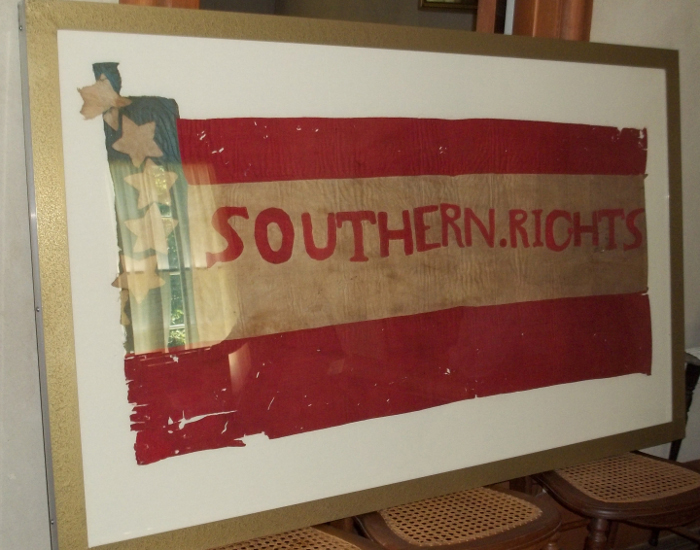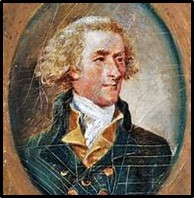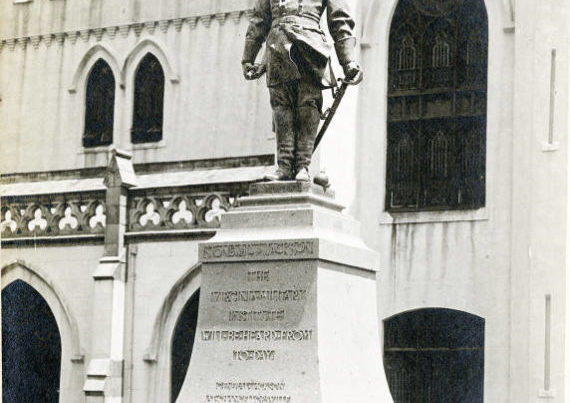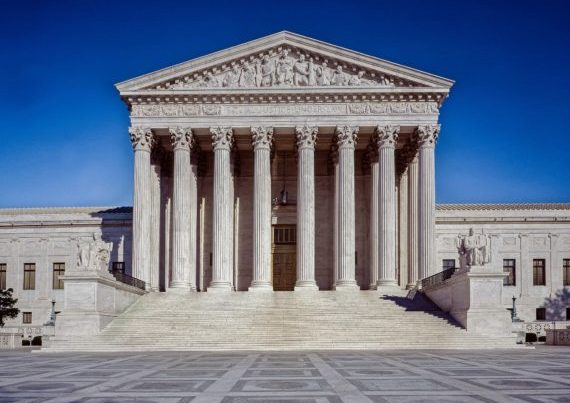
People remember Missouri as a Union rather than a Confederate state. Even those who are not offended by the memory of the Confederacy are either unaware Missouri seceded from the Union or refuse to recognize Missouri’s secession because it was not done “properly.” Considering the attitudes and underhanded politics common in the 1860s, what exactly does proper mean? When most people use this or an equivalent term they are referring to the state’s constitutional convention, which was convened with the assumption that secession was legal but an amendment to their state constitution may be necessary to sever ties with the Union. Conventions were the most common method of implementing an act of secession; by 1860 and 1861, they were considered the normal way, but were not the only way. For some states that wanted to leave the Union, this method was not even possible.
Public opinion concerning secession was diverse in Missouri; one third supported it, one third opposed it and one third supported the Confederacy but opposed the war. The problem was Missouri’s convention was controlled by unconditional Unionists, who, led by Republican activist and Lincoln financer Frank Blair, had no intention of voting with the will of their constituents. They wanted to keep Missouri in the Union at all costs. However, not even they were able to agree on whether to support the war, so they took a position of armed neutrality within the Union, as Kentucky also did. Meanwhile, Missouri’s General Assembly was filled with moderate pro-Southern secessionists. The issue seemed settled, until United States General Nathaniel Lyon informed Governor Claiborne Jackson that neutrality was not acceptable to the Union Army and that Missouri was a hostile state.
The General Assembly fled Jefferson City ahead of advancing Union troops and reconvened in the small Ozark town Neosho where they issued this legislative act on October 31, 1861:
An act declaring the political ties heretofore existing between the State of Missouri and the United States of America dissolved.
Whereas the Government of the United States, in the possession and under the control of a sectional party, has wantonly violated the compact originally made between said Government and the State of Missouri, by invading with hostile armies the soil of the State, attacking and making prisoners the militia while legally assembled under the State laws, forcibly occupying the State capitol, and attempting through the instrumentality of domestic traitors to usurp the State government, seizing and destroying private property, and murdering with fiendish malignity peaceable citizens, men, women, and children, together with other acts of atrocity, indicating a deep-settled hostility toward the people of Missouri and their institutions; and
Whereas the present Administration of the Government of the United States has utterly ignored the Constitution, subverted the Government as constructed and intended by its makers, and established a despotic and arbitrary power instead thereof: Now, therefore, Be it enacted by the general assembly of the State of Missouri, That all political ties of every character new existing between the Government of the United States of America and the people and government of the State of Missouri are hereby dissolved, and the State of Missouri, resuming the sovereignty granted by compact to the said United States upon admission of said State into the Federal Union, does again take its place as a free and independent republic amongst the nations of the earth.
This act to take effect and be in force from and after its passage.
This document was later codified by a public referendum, but the margin of victory has been lost to the passage of time. At the same time the above act was passed, legislators lobbied for admission to the Confederate States. Their request was granted on November 28, 1861.
Notice that the legislature dissolves all bonds of union with the United States not once, but twice but made no reference, ether explicitly or implicitly, to upholding slavery. One can only assume that this was deliberate, and that the people of Missouri did not consider slavery to be a reason for secession.
The “sectional party” referenced by Missouri leaders was the Republicans Party, whom they furthermore accused of acting purely for Northern interests leading to a sense of marginalization and victimization. The “compact” which the legislature accused President Abraham Lincoln and the Republicans of violating was Missouri’s Ordinance of Ratification, the document in which the State had accepted the United States Constitution. Many people in Missouri considered the Ordinance to be a contract which specified the terms and conditions under which Missouri entered and would remain in the Union, but the validity of this document was regarded as contingent on the Federal Government’s willingness to follow it.
The “invasion” referenced in the Ordinance began on May 10, 1861, when General Lyon ordered the pro-Southern Missouri State Guard to cease drilling at Camp Jackson in St. Louis and to disband. A tense standoff ensued. Guard leaders eventually complied with the order, and Lyon then marched them through town as if they were prizes of conquest. Many St. Louisans gathered in support of the Guard, so Lyon ordered his men to shoot into the crowd, an event known as the Camp Jackson Massacre.
When Governor Jackson arrived to deescalate the situation, Lyon responded by saying:
Rather than concede to the State of Missouri for one single instant the right to dictate to my government in any matter however important, I would see you, and you, and you, and you, and every man, woman, and child in the State, dead and buried! This means war. In an hour one of my officers will call on you and conduct you out of my lines.
Lyon repeated “you” four times referring to the Governor and three of his staff members. Notice also that Lyon spoke of the Federal Government as “my government” rather than “our government.” In doing so he treated Jackson as a foreign president rather than an American governor. At the time of the Camp Jackson Massacre, the Ordinance of Secession would not be in force for another five months, but far as Lyon was concerned, Missouri was already with the South.
Jackson and his staff boarded a train for Jefferson City. They stopped along the way to burn the bridges over the Gasconade and Osage Rivers to prevent the rail line’s use by Union troops. Upon arriving in Jefferson City, Jackson directed State officials evacuate the capital. They took with them the State Seal and as many documents from the Missouri State Archives. Lyon pursued by moving his men up the Missouri River aboard a fleet of steam boats where he ultimately occupied Jefferson City when he arrived.
Meanwhile, the pro-Southern legislature accused every Unionist Missourian of being a “domestic traitor.” As the Union Army moved to occupy other towns, some pro-Union citizens helped the Lyon’s army steal from Missouri Southerners. Union troops also suspended pro-Southern Missourians’ right to bear arms and even went so far as to put pro-Confederate pastors in jail without a trial for “praying for the rebels.”
With Lyon in control of the capital, the pro-Union State Convention declared the State’s offices vacant and appointed themselves to said positions. These men did not possess the “voice of the people” and did not have the authority to depose elected officials. The legitimate legislature led by Governor Jackson and pro-Southern leaders clearly considered them to be Lincoln’s puppets, but this was overlooked by Lyon and pro-Union leaders who needed the Convention’s help to win the war.
Missouri, like other Southern States, reasserted its former independence through its legislative act of secession. This was unorthodox but no less legitimate. Thus, Missouri should be considered at minimum a de facto member of the Confederate States of America and a casualty of Mr. Lincoln’s War.






